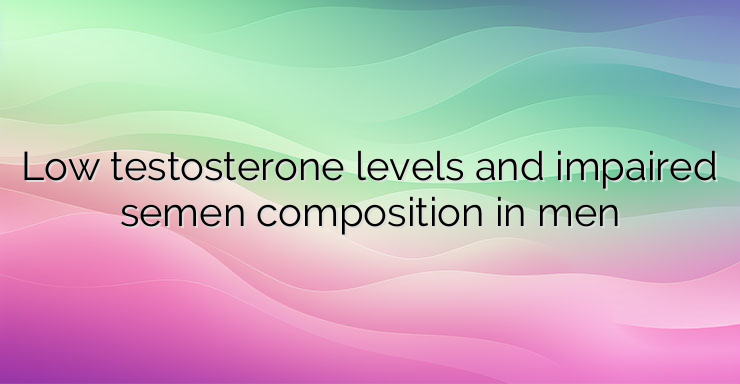A number of conditions can cause oligozoospermia – a low concentration of sperm in the seminal fluid. The hypothalamus produces and secretes gonadotropin-releasing hormone – GnRH, which reaches the anterior lobe of the pituitary gland and stimulates gonadotrope cells to release luteinizing hormone – LH and follicle-stimulating hormone – FSH into the systemic circulation. LH stimulates the Leydig cells of the testes to synthesize and secrete testosterone, while FSH stimulates the Sertoli cells in the seminiferous tubules to promote spermatogenesis. Testosterone, some of which is aromatized into estradiol, and inhibin B, which is secreted by the Sertoli cells, then provide negative feedback to the hypothalamus and pituitary to decrease LH and FSH secretion, respectively. Deficiency of GnRH secretion is most often congenital. Usually, this condition is diagnosed by the lack of puberty at puberty, although there are partial forms of the disease that allow a limited degree of pubertal development or, in rare cases, even full pubertal development before the onset of hypogonadotropic hypogonadism. Pituitary Dysfunction Many diseases of the pituitary gland can interrupt or suppress the secretion of gonadotropic hormones. Pituitary adenomas, craniopharyngiomas, and Rathke’s cysts can have a negative effect on gonadotropic cells and inhibit hormone secretion. The most common subtype of pituitary adenoma, prolactinoma or prolactin-secreting pituitary adenoma, additionally leads to hyperprolactinemia, which independently suppresses the hypothalamic-pituitary-gonadal axis and causes hypogonadotropic hypogonadism. Infiltrative pituitary diseases such as sarcoidosis, hemochromatosis, and Langerhans histiocytosis are known to result in decreased pituitary function. Adrenal dysfunction Although less common, congenital adrenal hyperplasia results in an enzyme deficiency in the adrenocortical steroid synthetic pathway. Such is the deficiency of 21-hydroxylase. This condition results in a deficiency in glucocorticoid production and a concomitant excess in adrenal androgen production due to high secretion of adrenocorticotropic hormone. Adrenal androgens suppress the function of the hypothalamic-pituitary-gonadal axis. In this condition, elevated levels of testosterone and low levels of gonadotropic hormones are observed. The diagnosis is confirmed by the presence of elevated serum concentrations of 17-hydroxyprogesterone and androstenedione. Glucocorticoid treatment can suppress excessive adrenal steroidogenesis, thereby reducing gonadotropic hormone suppression and improving reproductive health. Thyroid Disease Both hyperthyroidism and hypothyroidism can have a negative impact on spermatogenesis and male fertility.Hyperthyroidism promotes elevated estrogen levels through increased aromatization of androstenedione and testosterone to circulating estrogens in peripheral tissues. The resulting elevated serum estrogen concentrations suppress the hypothalamic-pituitary-gonadal axis. Additionally, high levels of thyroid hormones impair the proliferation of Sertoli cells, thereby reducing the capacity to form sperm. Hyperthyroidism can also result in significantly increased levels of cholin hormone-binding globulin – SHBG, which reduces free and bioavailable serum testosterone levels. Hypothyroidism affects testicular development during the prepubescent years. In addition, in primary hypothyroidism there is a compensatory increase in thyrotropin-releasing hormone secretion from the hypothalamus. Thyrotropin-releasing hormone stimulates lactotroph cells, leading to hyperprolactinemia, which suppresses the function of the hypothalamic-pituitary-gonadal axis. Normal function of this axis is usually restored once an optimal balance is established in thyroid function and thyroid hormone levels. References: https://www.ncbi.nlm.nih.gov/pmc/articles/PMC7566408/#:~:text=Oligozoospermia%20refers%20specifically%20to%20the,million%20sperm%2FmL%20of%20ejaculate.


Leave a Reply